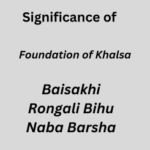Delhi world’s most polluted capital city

According to the World Air Quality Report 2019 compiled by IQAir Air Visual Delhi topped the list of most polluted capital cities in the world in 2019;
Report also revealed that 21 of the world’s 30 most polluted cities are in India;
Ghaziabad is the most polluted city in the world, followed by Hotan in China, Gujranwala and Faisalabad in Pakistan and then Delhi in the fifth place.
The 21 Indian cities which are in world’s 30 most polluted cities, in the order of their ranking, are, Ghaziabad, Delhi, Noida, Gurugram, Greater Noida, Bandhwari, Lucknow, Bulandshahr, Muzaffarnagar, Baghpat, Jind, Faridabad, Coraut, Bhiwadi, Patna, Palwal, Muzaffarpur, Hisar, Kutail, Jodhpur and Moradabad.
According to country-wise data, India ranked fifth in the world’s most polluted countries with Bangladesh on top of the list followed by Pakistan, Mongolia and Afghanistan.
The report also mentions that Indian cities have shown improvement from last year.
“Whilst cities in India, on average, exceed the World Health Organisation (WHO) target for annual PM 2.5 exposure by 500 per cent, national air pollution decreased by 20 per cent from 2018 to 2019 with 98 per cent of the cities experiencing improvement,” the report said.
PM 2.5 includes pollutants such as sulfate, nitrates and black carbon. Exposure to such particles has been linked to lung and heart disorders, and can impair cognitive and immune functions.
LEARNING WITH TIMES
PM2.5 means particulate matter in the air – caused by motor exhaust or anything combustible – that is less than 2.5 micrometers.
WHO’s air quality guidelines state that by reducing particulate matter (PM10) from 70 to 20 micrograms per cubic metre, air pollution-related deaths could be reduced by roughly 15 per cent. WHO safe limits for annual mean of PM 2.5 and PM 10levels are 10 and 20 micrograms per cubic meter.
Airborne particles are sometimes referred to as ‘particulate matter’ or ‘PM’. They include dust, dirt, soot, smoke, and liquid droplets. Some particles are emitted directly into the air from a variety of sources that are either natural or related to human activity. Natural sources include bushfires, dust storms, pollens and sea spray.
Those related to human activity include motor vehicle emissions, industrial processes (eg electricity generation, incinerators and stone crushing), unpaved roads and woodheaters. Particles can be classified on the basis of their size, referred to as their ‘aerodynamic diameter’. ‘Coarse particles’ are those between 10 and 2.5 micrometres (µm) in diameter; ‘fine particles’ are smaller than 2.5 µm; and ‘ultrafine particles’ are smaller than 0.1 µm. Studies have linked exposure to particle pollution to a number of health problems including respiratory illnesses (such as asthma and bronchitis) and cardiovascular disease.
INDIA’S STANDARD FOR LEVEL OF POLLUTION
India has set standards for what it thinks are appropriate warnings for a particular level of pollutant. AQI help in comparing pollution levels at a glance with a colour code and a numerical value. In India, AQIs are determined based on the concentrations of seven pollutants, including PM2.5 (fine, respirable particles), sulphur dioxide (SO2), nitrogen dioxide (NO2) and carbon monoxide (CO).There are six AQI categories, namely: Good, Satisfactory, Moderately polluted, Poor, Very poor and Severe.
The Index is centred around five chief pollutants – Particulate Matter with a diameter less than 10 micrometres (PM10), Particulate Matter with a diameter of less than 2.5 micrometers (PM2.5), ozone (O3), Nitrogen Dioxide (NO2), and Carbon Monoxide (CO).
National Clean Air Programme (NCAP) was launched which is a time bound national level strategy for pan India implementation to tackle the increasing air pollution problem across the country in a comprehensive manner .
- It is a five-year action plan to tackle pollution across the country.
- Collaborative and participatory approach involving relevant Central Ministries, State Governments, local bodies and other Stakeholders with focus on all sources of pollution forms the crux of the Programme.
- Overall objective of the NCAP is comprehensive mitigation actions for prevention, control and abatement of air pollution besides augmenting the air quality monitoring network across the country and strengthening the awareness and capacity building activities.
- The tentative national level target of 20%–30% reduction of PM2.5 and PM10 concentration by 2024 is proposed under the NCAP taking 2017 as the base year for the comparison of concentration.
- Other features of NCAP include, increasing number of monitoring stations in the country including rural monitoring stations, technology support, emphasis on awareness and capacity building initiatives, setting up of certification agencies for monitoring equipment, source apportionment studies, emphasis on enforcement, specific sectoral interventions etc.






0 Comments